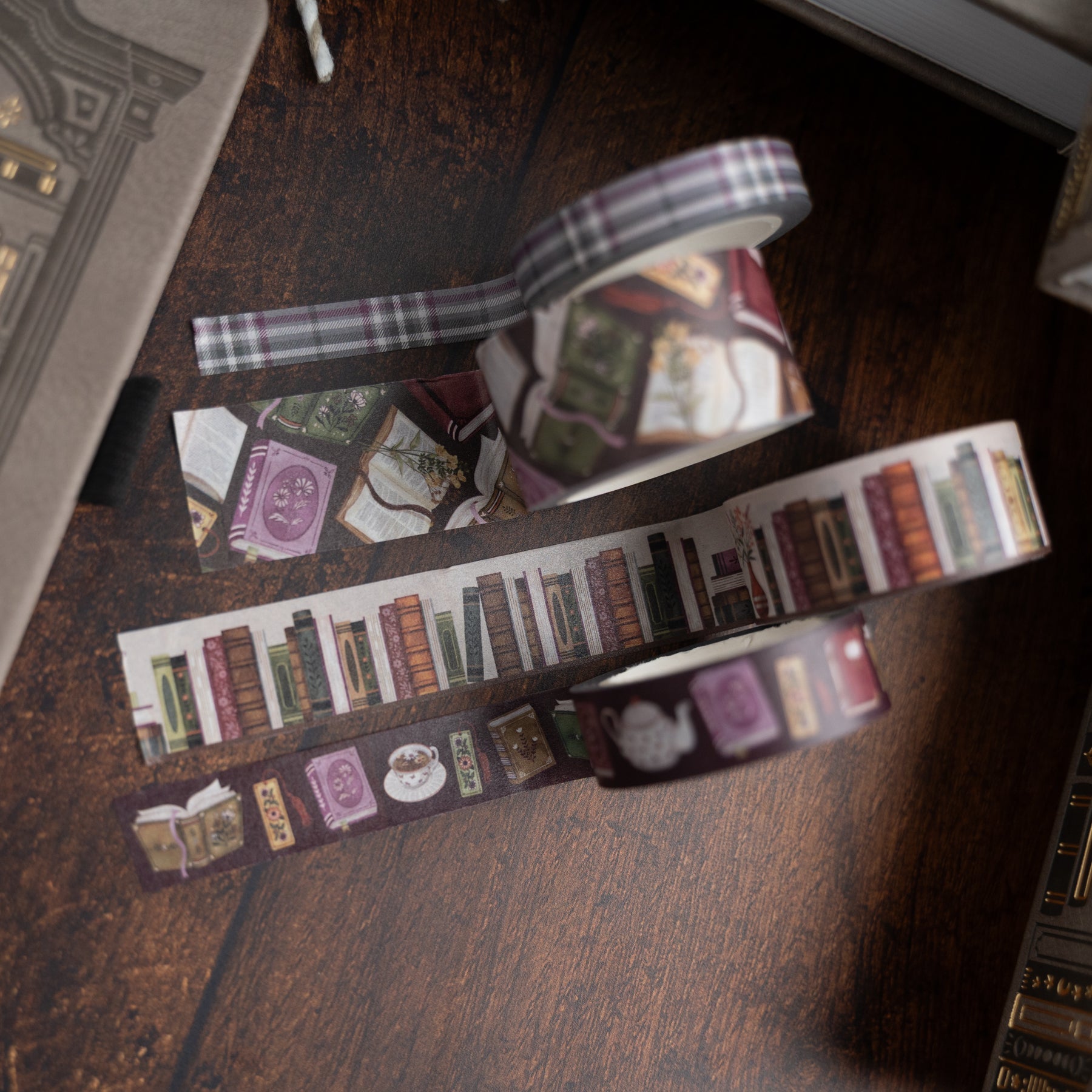Hello everyone! It is Erin Floto from @erinflotodesigns here and I am here to introduce some bullet journaling spreads and gardening bujo spreads that you may not have seen before. This time of year is perfect for planning and why not plan how to create better soil for your garden? Today I’ll be walking through what is composting and how to track it using your bujo.
But first, here are the items you will need:
- Archer and Olive Journal - I used white dot grid notebook for these spreads but you can easily use kraft paper as well to match the soil and really get a perfect garden feel. I love the fall potted plant journal in particular!
- Fineliners - I love the Sakura Microns and the Muji Gel pens personally.
- Markers - I used a light sage green brush pen in my set composting pages but a nice brown would be great as well! Consider using Cinnamon Calliograph!
- Decorative Elements (optional) - I love adding stickers, washi and more to bring some design to my pages
- A Composting Bin and Scraps! - If you want to compost, consider looking into different types of composting bins. I have a tumbler bin that is easy to rotate and I got it for only $30 at Aldi! And of course, save your kitchen and yard scraps for use!

What is Composting and Why Should I Do It?
As an environmental scientist in my career job, I have a lot of experience learning about life cycles, including the decomposition of organic matter. And that is exactly what composting is! Composting is how the natural world recycles organic material, such as food scraps, grass clippings, twigs and branches, leaves and straw, coffee grids, paper, and more!

There are a lot of world benefits to composting, such as reducing the amount of waste going to landfills, reductions of methane emissions, improving soil health, and conserving water. Let’s discuss each of these:
- Reduce Waste Stream - food scraps and garden waste make up over a quarter of household waste on average. Recycling them for compost reduces the overall amount of waste going into your local landfills
- Reduce Methane Emissions - in landfills, the process needed to break down food scraps and waste is trapped with other garbage. So instead of breaking down effectively like in composting, they release biogases like methane and carbon. These are harmful emissions that accelerate climate change
- Improves Soil Health and Lessens Erosion - composting leads to nutrient-rich soil that is perfect for encouraging growth in your gardens
- Conserve Water - since the soil is nutrient-rich in nitrogen, potassium, and phosphorus, it leads to the soil retaining more water for longer. This means that you do not have to water your garden as often!
In addition to those benefits, there is an added personal benefit if you pair composting with prevention of food waste. Learning how to shop, prepare and store food more effectively leads to less wasted food and saves your family money!

Types of Composting
Composting is a big do it yourself project and there are a lot of different ways to make it work for you. Let’s start with the cold and hot composting.
- Cold composting is a hands-off, more natural approach but takes a significantly longer time to break down the organics because it is not the most effective method
- Hot composting is a faster break down in organics because it uses the optimum carbon-to-nitrogen ratios
Depending on how involved and hands-on you want to be will lead to a quicker turnaround to be able to use the compost you create. In a cold compost process, it could take around 1-2 years. In a hot compost, it could take between 1-12 months.
In addition to the type of composting you do, there are also numerous methods of storing the compost. This includes in open or closed bins, in tumbler bins, using a trench composting method, or using vermicomposting with worms.
If you want to do a more hands-off approach because you live in an apartment building or do not have the time or finances to have compost on-site, consider outsourcing. Many local municipalities collect food waste, so give them a call to see what type of process there is in your community. Local and community gardens may also have composting in your area. There is also pay for service, similar to a trash pick up, where they will pick up your organic matter.
What Should Be Composted and How To Compost
Now that you have the background on what is composting and what types of do it yourself composting there is, you should learn what is okay to compost and what is not.
|
Yes - Can Compost |
No - Cannot Compost |
|
Cardboard (uncoated, small pieces) |
Black Walnut Tree Leaves and Twigs |
|
Coffee Grounds, Filters, and Tea Bags |
Coal/Charcoal Ash |
|
Eggshells, Fruits and Vegetables |
Dairy Products and Eggs |
|
Fireplace Ashes (natural firewood) |
Diseased Plants |
|
Grass Clippings |
Fats, Grease, Lards, and Oils |
|
Hair and Fur |
Meat, Fish Bones, and Scraps |
|
Hay and Straw |
Pet Feces or Litter |
|
Leaves |
Yard Trimmings Treated With Pesticides |
|
Newspaper (shredded) |
|
|
Nutshells |
|
|
Paper (uncoated, small pieces) |
|
|
Sawdust |
|
|
Wood Chips |
|
|
Yard Clippings |
Composting, as mentioned previously, has an ideal ratio for carbon and nitrogen. While your compost will break down eventually without the ideal ratio, the process of using the compost for your garden will be quicker when adhering to the ratio. The ideal ratio is between 25-30 parts carbon to 1 part nitrogen (25-30:1). This means when you are adding organics to your compost, there is an ideal method to layering.
- Greens (Nitrogen) - includes things like food waste, fresh grass clippings, coffee grounds
- Browns (Carbon) - includes things like dead leaves, branches and twigs, papers
In addition to layering the ideal proportions of greens and browns, compost also needs oxygen and water to break down.
- Oxygen - optimal air flow by layers, using tumbler/rotating/turning pile regularly, and keeping items small
- Water - if you are adding food scraps, you will likely have enough water, but if it is too dry, add water!
In addition to the composting method above, be sure to keep your composting in a dry and shady area.

10 Rules For Composting
There was a ton of information in this blog, including background information. It is understandable to be a bit overwhelmed! So here are 10 Rules for Composting, including a freebie printable that you can put in your planner or bullet journal.
- Layer Your Compost
- Turn Your Compost
- Add Water
- Avoid Meat Scraps
- Have More Than One Bin
- Avoid Adding Trash
- Complete The Process Before Use
- Add Straw and Hay
- Add Eggshells and Coffee Grounds
- Avoid Pet Droppings

In addition to the photos and printable above, I have created a wonderful video where I talk about the process and my own experience below!
While I am an environmental scientist that has studied in this area for many years, I also used wonderful sources from the Natural Resources Defense Counsel and the Environmental Protection Agency to assist me in writing this blog. For more research and background, I highly recommend those resources! I hope you join me in choosing an earth-friendly method of recycling that also helps your wallet and garden flourish! Thank you so much for joining and please tag @erinflotodesigns and @archerandolive and #aoshare on Instagram with any composting spreads you may create!












0 comments